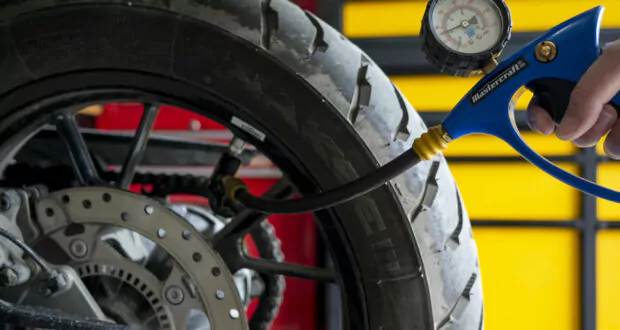Maintaining proper tire pressure is essential for every motorcycle rider. Often neglected, motorcycle tire pressure directly impacts both your motorcycle’s performance, and your safety.
In this article, we will delve into the significance of motorcycle tire pressure, the effects of incorrect pressure, how to determine the correct tire inflation, and essential tire pressure maintenance practices.
Understanding Tire Pressure
Tire pressure refers to the amount of air inside the motorcycle tires. It is measured in pounds per square inch (psi) or kilopascals (kPa). While ambient temperature, load capacity, and riding style influence tire pressure, it’s important to note that specific motorcycle models may have different pressure requirements for front and rear tires. Manufacturers provide recommended tire pressures for various riding conditions, which serve as a valuable starting point.
Effects of Incorrect Tire Pressure
Riding with incorrect tire pressure can have a range of detrimental effects on both the performance and safety of your motorcycle. Let’s delve deeper into these effects and explore additional examples to illustrate the significance of maintaining proper tire pressure.
1) Overinflated Tires:
a. Reduced Traction and Handling: Overinflated tires have a smaller contact patch with the road surface. This diminished contact reduces the tire’s ability to grip the road, resulting in reduced traction. As a result, the motorcycle may exhibit poor handling characteristics, especially during cornering or in wet conditions. The bike may feel more prone to sliding or slipping, increasing the risk of losing control.
b. Uneven Tire Wear: Overinflated tires tend to wear more rapidly and unevenly, with increased wear occurring in the center of the tire. This wear pattern can compromise the tire’s structural integrity and traction over time, making it more susceptible to failure and blowouts.
c. Harsher Ride: Overinflated tires transmit more road imperfections and shocks to the rider, leading to a harsher and less comfortable ride experience. The increased stiffness of the tires can negatively impact rider comfort, especially on rough or uneven surfaces.
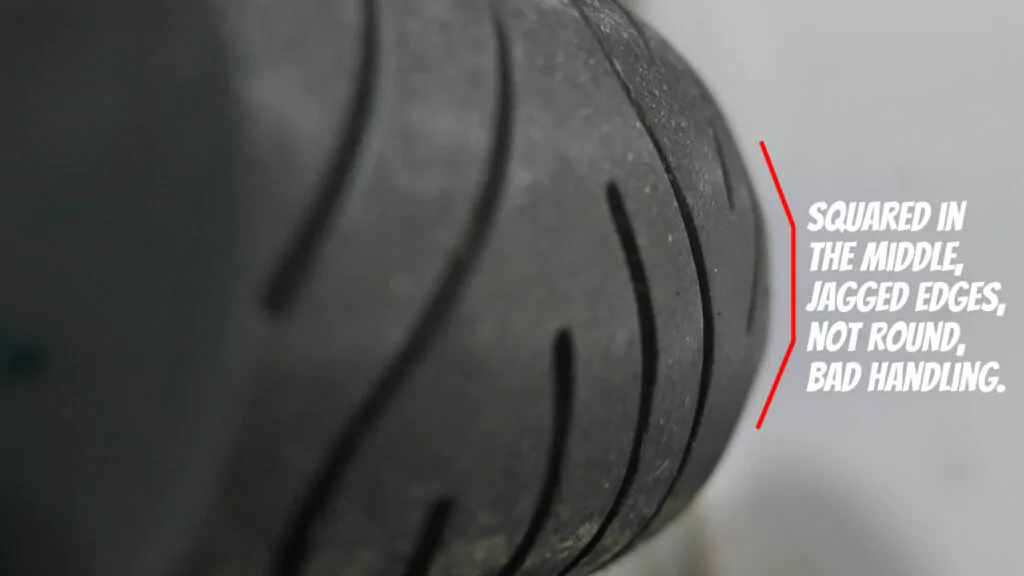
Underinflated motorcycle tire wear
2) Underinflated Tires:
a. Decreased Stability and Maneuverability: Underinflated tires have a larger contact patch with the road, which can make the motorcycle feel unstable and less responsive. Steering inputs may feel sluggish, and the bike may exhibit a tendency to wander or feel heavy while cornering. This decreased stability can compromise the rider’s control over the motorcycle.
b. Increased Heat Buildup: Underinflated tires generate more heat due to the increased sidewall flexing. Excessive heat can cause the tire’s internal structure to weaken, leading to accelerated wear and potential tire failure. The risk of a blowout is significantly higher with underinflated tires, especially during extended rides or when carrying additional weight.
c. Reduced Fuel Efficiency: Riding with underinflated tires increases rolling resistance, which requires the engine to work harder to maintain speed. This increased workload results in higher fuel consumption, reducing the motorcycle’s overall fuel efficiency.
d. Premature Tire Wear: Underinflated tires wear more quickly, particularly on the outer edges of the tread. This wear pattern, known as “shoulder wear,” reduces a motorcycle tire’s lifespan and necessitates more frequent tire replacements.
e. Increased Risk of Tire Damage: The sidewalls of underinflated tires are more vulnerable to damage from impacts, such as hitting potholes or sharp objects on the road. The decreased air pressure leaves less cushioning and protection for the tire, increasing the likelihood of punctures or sidewall bulges.
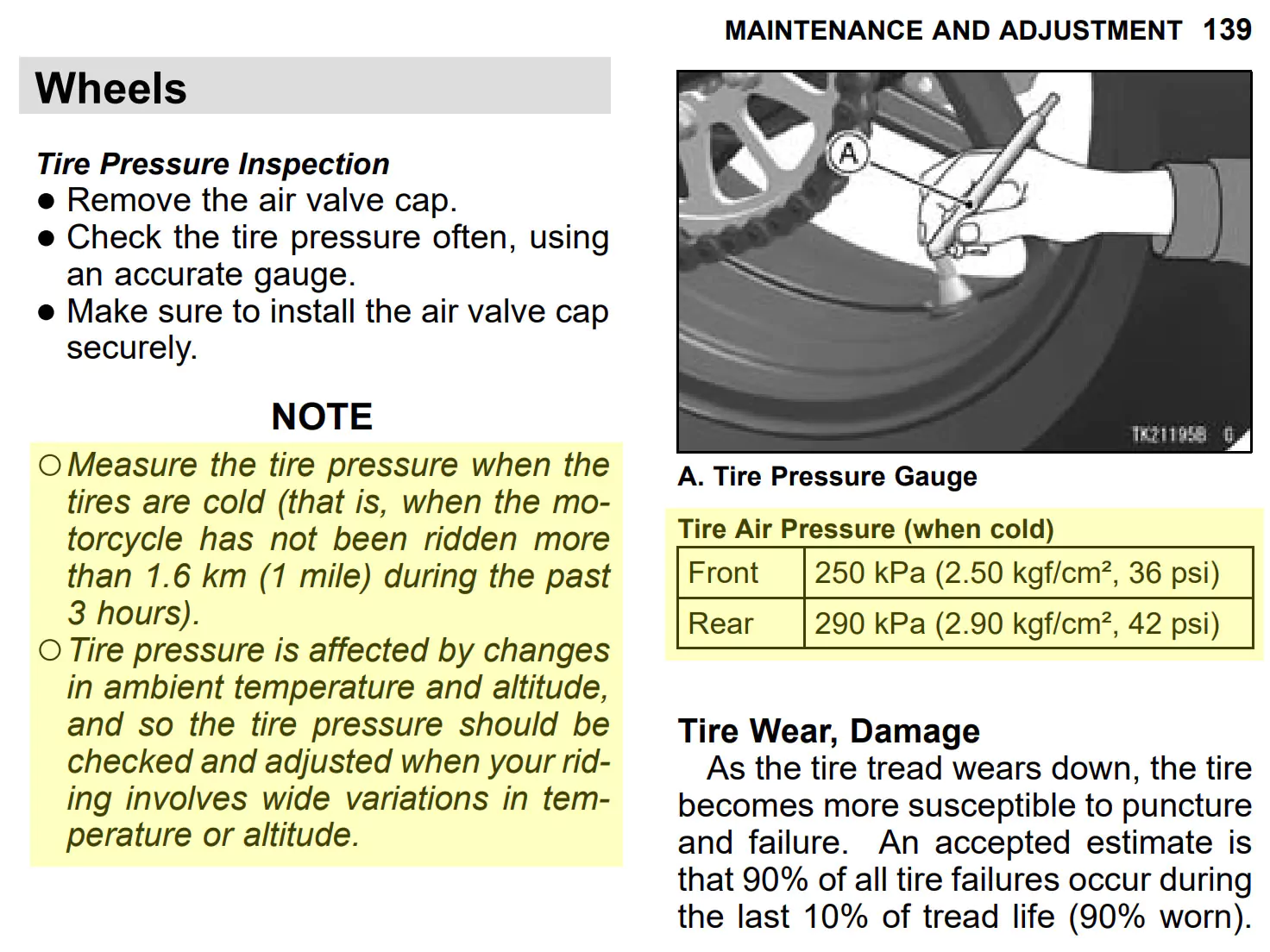
Determining the Correct Tire Pressure
Consulting the owner’s manual is the first and most important step in determining the correct tire pressure for your motorcycle. The owner’s manual provides specific recommendations from the motorcycle manufacturer, taking into account various riding conditions and scenarios. These recommendations are typically categorized based on factors such as solo riding, carrying a passenger or luggage, and differentiating between sport riding and touring.
The manufacturer’s recommendations serve as a baseline for setting the tire pressure. They are developed through extensive testing and research to ensure optimal performance, handling, and safety for the specific motorcycle model. Following these guidelines will help you maintain a solid starting point for tire pressure.
However, it’s important to note that adjustments to the recommended tire pressure may be necessary based on personal preferences and specific motorcycle models. Factors such as rider weight, riding style, road conditions, and climate can influence the ideal tire pressure. For example, some riders prefer a slightly higher or lower tire pressure for a specific feel or handling characteristics. Additionally, certain aftermarket modifications, such as changes in suspension or tire size, may require adjustments to the tire pressure.
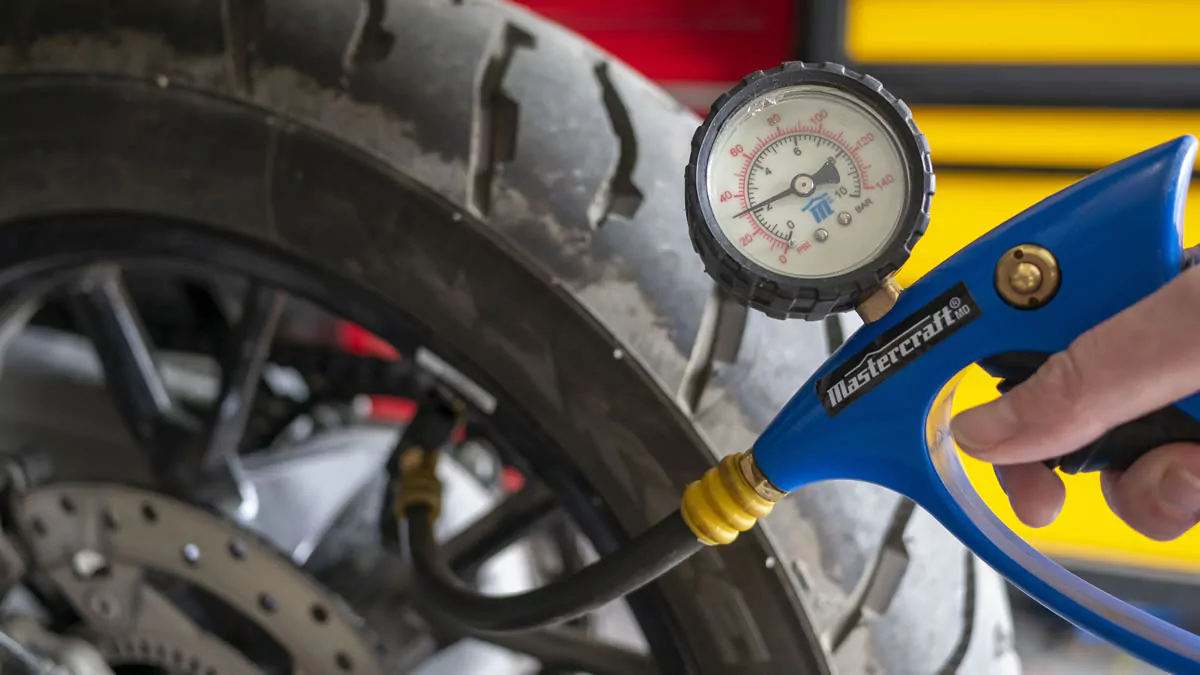
The Right Tools for the Job
To accurately measure tire pressure, riders need reliable tire pressure gauges. There are two main types: analog gauges and digital gauges. Both can be relatively inexpensive. Analog gauges utilize a dial or needle to indicate the pressure, while digital gauges provide a digital readout.
Analog gauges are often appreciated for their simplicity and durability. They do not require batteries and are generally resistant to water and dust. However, it’s important to ensure that the gauge is properly calibrated to maintain accurate readings.
Digital gauges provide a digital readout of the tire pressure. These gauges are known for their ease of use, and may offer additional features like backlit screens or the ability to switch between different measurement units. Digital gauges are powered by batteries, which may make them a nuisance on long trips.
Portable air compressors are also handy tools for convenient inflation on the go, especially if they can do more than one job. For example, the Lokithor air compressor also works as a jump starter. Pretty handy!
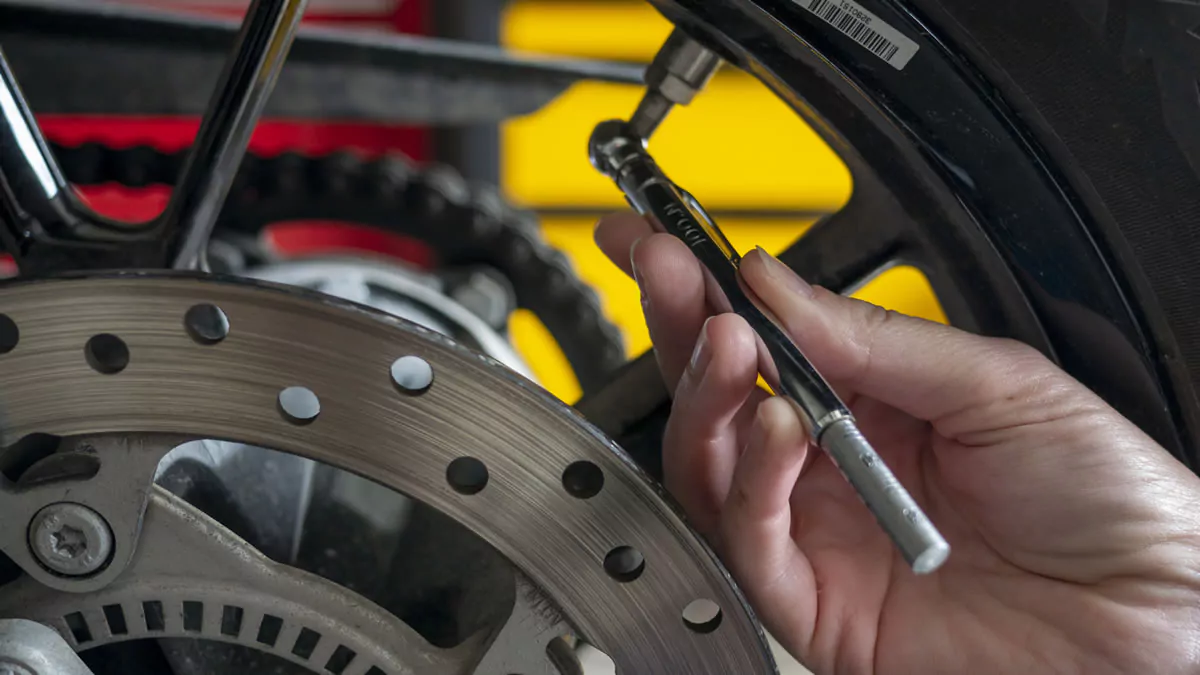
Achieving Proper Tire Inflation
Before every ride, it’s essential to perform a pre-ride inspection. Check the tread depth and condition, ensuring there are no visible signs of wear or damage. Inspect the sidewalls for any irregularities or cuts. In other words, check for the 7 signs it’s time to replace your motorcycle tires.
Once you’re confident in the tire’s overall condition, it’s time to check and adjust the tire pressure. Follow the recommended techniques for your gauge and motorcycle model. Take necessary safety precautions, such as wearing protective gear and ensuring the motorcycle is stable during the process. Maintaining consistent pressure levels across both tires is crucial for balanced handling.
Tire Pressure Maintenance and Monitoring
Regular pressure checks are vital for maintaining optimal tire pressure. Aim to check your tire pressure at least once a month, or more frequently during significant temperature changes or long rides. Consider seasonal variations in ambient temperature and adjust the tire pressure accordingly. On extended rides, monitor the tire pressure periodically to ensure it remains within the recommended range.
Watch out for warning signs of tire pressure issues, such as uneven tire wear, handling abnormalities, or a feeling of sluggishness in the bike’s performance.
Conclusion
Proper motorcycle tire pressure is not a trivial matter. It directly impacts your safety on the road and significantly contributes to the overall performance of your bike. Riding with incorrect tire pressure can lead to reduced traction, compromised handling, uneven tire wear, decreased stability, and increased risks of tire failure and damage. By understanding these effects, checking and adjusting tire pressure regularly, and using reliable tools, you can ensure a smoother, safer, and more enjoyable riding experience.
Remember, maintaining optimal tire pressure should be a priority for all motorcycle riders. Stay vigilant, ride safe, but have fun!
 YouMotorcycle Motorcycle Blog – Motorcycle Lifestyle Blog, MotoVlog, Motorcycle Reviews, News, & How-Tos
YouMotorcycle Motorcycle Blog – Motorcycle Lifestyle Blog, MotoVlog, Motorcycle Reviews, News, & How-Tos
